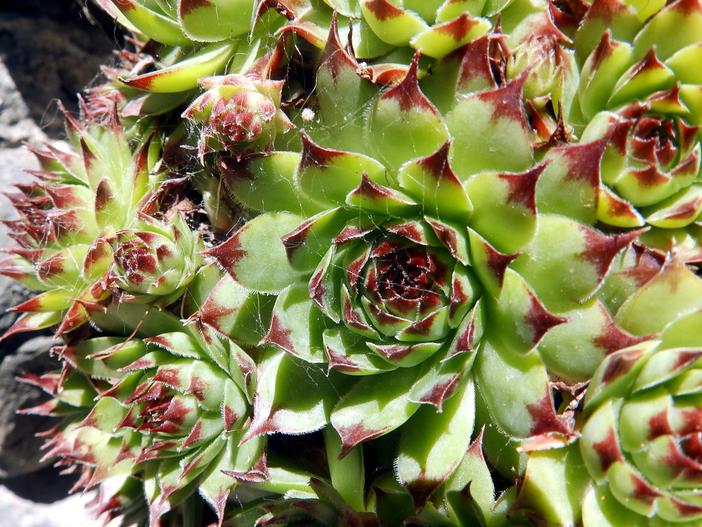Common Houseleek
(Sempervivum tectorum)
Common Houseleek (Sempervivum tectorum)
/
/

Amante Darmanin
CC BY 2.0












































































Estimated Native Range
Summary
Common Houseleek is appreciated for its drought tolerance and is often used as ground cover in rock gardens, green roofs, and as a container plant. Its succulent leaves and ability to withstand dry conditions make it a low-maintenance choice for gardeners. It is also traditionally believed to protect buildings from lightning strikes, a superstition dating back to Roman times. The plant has earned the Royal Horticultural Society’s Award of Garden Merit, indicating its value in cultivation. It requires full sun exposure and well-drained soil, tolerating a range of soil types as long as they are not waterlogged. While generally disease-free, it can suffer from root rot if overwatered.CC BY-SA 4.0
Plant Description
- Plant Type: Succulents
- Height: 0.5-1 feet
- Width: 0.5-1.5 feet
- Growth Rate: Moderate
- Flower Color: Pink, Purple, Red
- Flowering Season: Summer
- Leaf Retention: Evergreen
Growth Requirements
- Sun: Full Sun
- Water: Very Low, Low
- Drainage: Fast
Common Uses
Bee Garden, Border Plant, Butterfly Garden, Deer Resistant, Drought Tolerant, Edible*Disclaimer: Easyscape's listed plant edibility is for informational use. Always verify the safety and proper identification of any plant before consumption., Fire Resistant, Groundcover, Low Maintenance, Potted Plant, Rock Garden, Salt Tolerant, Street Planting
Natural Habitat
Native to the mountains of Southern Europe, particularly the Alps, Apennines, and Carpathians
Other Names
Common Names: Hen-And-Chickens , Almindelig Husløg , Dach-Hauswurz , Joubarbe Des Toits , Donderblad , Taklök , Äkta Taklök , Dachwurz
Scientific Names: Sempervivum tectorum , Sempervivum montanum , Sempervivum minutum , Sempervivum royanum , Sempervivum tectorum subsp. alpinum , Sempervivum boutignyanum , Sempervivum vellavum , Sempervivum alpinum , Sempervivum tectorum var. alpinum , Sempervivum cebennense
GBIF Accepted Name: Sempervivum tectorum L.